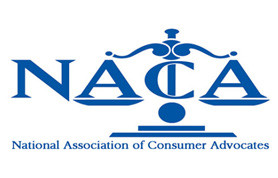The NY ‘IRA Trust’ Nightmare (2025-2026): Why Naming a Trust as Your IRA Beneficiary is a Tax Trap
As a New York estate planning attorney with many years of experience, I’ve seen the devastating fallout of a “simple” mistake. You spent your life diligently saving into your IRA. You created a Revocable Living Trust to protect your family and avoid probate. You then made one final, logical move: you named your trust as the beneficiary of your IRA.
I am Russel Morgan, and in my firm’s experience handling over 1,000 successful cases, I can tell you this “logical” move may have just created a multi-million dollar tax bomb for your children. The SECURE Act of 2019 completely upended the rules for inherited IRAs, and it turned *most* existing trusts into ticking time bombs.
A trust that was perfectly drafted in 2018 is now a tax-acceleration nightmare. If your estate plan hasn’t been reviewed since 2019, your IRA is at risk. This 2025-2026 guide will explain why this is a crisis, what the “Conduit Trust” trap is, and how we, at Morgan Legal Group, design plans to *properly* protect your retirement assets. As our 900+ positive online reviews show, our greatest value is navigating these complex legal and tax shifts for our clients.
The SECURE Act: The Law That Changed Everything
To understand the “IRA Trust” nightmare, you must first understand the SECURE Act. Before 2020, a beneficiary (like a child) could “stretch” an inherited IRA, taking small distributions over their entire life expectancy. This allowed the IRA to grow tax-deferred for decades.
The SECURE Act killed the “Stretch IRA” for most non-spouse beneficiaries. It replaced it with the “10-Year Rule.”
This 10-Year Rule states that most beneficiaries (like adult children) must withdraw 100% of the inherited IRA by December 31st of the 10th year following the year of the owner’s death. This forces a massive amount of taxable income into your children’s *peak earning years*, pushing them into the highest tax brackets. It’s a “tax bomb” by design.
The Fatal Flaw: Why Naming a Trust as Beneficiary is a Trap
So, you name your trust as the beneficiary, thinking it will protect the IRA. The problem? The IRS has strict rules. A trust is not a “person.” For a trust to even *qualify* for the “good” 10-Year Rule, it must be a “See-Through Trust.”
If your trust fails this test, it is a “Non-Designated Beneficiary.”
- The Result: The IRA is forced into the 5-Year Rule. The entire account must be liquidated in just 5 years, accelerating the tax bomb even faster.
- The Trap: Many “DIY” or poorly drafted trusts fail this test. We’ve seen it in our practice. The simple act of including a “charity” as a minor beneficiary, or not having the right language, can invalidate the see-through status and cost your family a fortune.
The Real Nightmare: The “Conduit Trust” Time Bomb
This is the crisis we are fixing for clients in 2025. Even if your trust *qualifies* as a “see-through” trust, it was likely drafted as a “Conduit Trust.”
What is a Conduit Trust?
Before 2020, this was the “gold standard” of IRA planning. A conduit trust says: “Any Required Minimum Distribution (RMD) I receive from the IRA, I must *immediately* pass out (‘conduit’) to my child beneficiary.”
Why it was GREAT (Pre-SECURE Act):
The “Stretch IRA” RMDs were small (e.g., $10,000/year). The trust would pass this $10k to the child, who would pay a small, manageable tax. The other $990,000 in the IRA stayed protected inside the trust from the child’s creditors, lawsuits, or a divorce.
Why it is a DISASTER (Post-SECURE Act):
The 10-Year Rule changed the game. There are no small, annual RMDs for most beneficiaries. The *entire* IRA balance must be paid out by Year 10.
Here is the trap: A conduit trust *still* says “any distribution I receive, I must *immediately* pass out.” In Year 10, to satisfy the 10-Year Rule, the IRA *must* pay 100% of its assets *to the trust*.
The trust is then legally *forced* by its own language to immediately “conduit” that entire lump sum (e.g., $1 Million) directly to your child.
The Result: The “Conduit Trust” *destroys* the very asset protection you created it for. That $1M is now in your child’s personal bank account, 100% exposed to their ex-spouse, a car accident lawsuit, or a bankruptcy. Your planning failed.
The Modern Solution: The “Accumulation Trust”
Because the “Conduit Trust” is now a tax and asset protection failure, we must use a different tool. The modern solution is the “Accumulation Trust.”
What is an Accumulation Trust?
An accumulation trust is a “see-through” trust that gives the Trustee *discretion*. The trust says: “I will receive the IRA distributions, but I (the Trustee) have the *choice* to either hold onto (‘accumulate’) the money or pay it out to the beneficiary.”
The “Accumulation” Solution to the 10-Year Rule:
The IRA is still subject to the 10-Year Rule. The trust must pull all the money out of the IRA by Year 10.
The Difference: The Trustee can pull the $1M from the IRA *into the trust itself*. The Trustee is *not* forced to distribute it to the child. The $1M can now sit *inside* the trust, fully protected from the child’s creditors, lawsuits, and divorce, exactly as you intended.
The “Accumulation Trust” Tax Trap: A New Problem to Solve
This sounds like a perfect solution, right? Not so fast. This is where you need an expert, not just a document-drafter. An accumulation trust solves the *asset protection* problem but creates a new *tax* problem.
Trusts have their own, highly compressed tax brackets.
- An individual in New York City doesn’t hit the top 37% federal tax bracket until they earn over $731,300 (in 2025).
- A trust hits the *exact same* 37% tax bracket after earning just $15,200.
The New Tax Trap:
The Trustee pulls the $1M from the IRA into the accumulation trust. The trust now has $1M in taxable income. It will pay the *highest possible tax rate* on almost the entire amount. This is a massive, immediate tax hit.
The “Balancing Act”: The Expert Attorney’s Real Job
This is the true challenge of 2025 estate planning.
- A Conduit Trust = 0% asset protection, but lower taxes (paid by the child).
- An Accumulation Trust = 100% asset protection, but the *highest possible* taxes (paid by the trust).
As attorneys with many years of experience, our job is to *counsel* you. There is no “one right answer.” We have to ask the hard questions:
- “Are you more worried about your son-in-law in a divorce, or a 37% tax bill?”
- “Is your child a responsible doctor, or do they have creditor problems?”
- “Can we draft a *hybrid* trust that gives the Trustee flexibility to ‘toggle’ between these options?”
This is why you hire a firm with 1,000+ cases. We don’t just sell you a trust; we design a plan that balances these complex, competing goals.
What About Your Existing 2018 Trust? (The “Time Bomb” in Your File Cabinet)
If you are reading this and your trust was signed before 2020, it is almost certainly a “Conduit Trust.” It is a tax and asset protection time bomb. As our 900+ positive reviews show, clients are immensely relieved when we find and fix this problem for them.
You *must* have your entire estate plan reviewed in 2025. We can often “restate” or “amend” your old trust to fix the IRA language, update your Power of Attorney, and ensure your plan works for the 2025/2026 tax and Medicaid laws.
The Dangers of a “DIY” IRA Beneficiary Form
The complexity doesn’t stop. How you *fill out the beneficiary form* is a legal document.
- The Trap: You write “My Living Trust” on the form. This is ambiguous. Is it revocable? Irrevocable?
- The Disaster: The IRA custodian, in confusion, may declare the beneficiary “invalid.” This defaults the beneficiary to “The Estate.” This is the *worst possible outcome*. It forces the entire IRA into the 5-Year Rule and drags it into the public probate process, destroying the very purpose of your trust.
- The Solution: The form must be filled out with precise legal language, e.g., “The Trustees of the [Your Name] Revocable Trust, dated [Date].”
Case Study: The Brooklyn Conduit Trust Disaster
We saw this case. A client’s father died in 2020. He had a $2M IRA. He had a 2018 “Conduit Trust” designed to protect the IRA from his son’s creditors.
- The Problem: The SECURE Act became law. The 10-Year Rule now applies.
- The Nightmare: The Trustee (the sister) must pull the $2M from the IRA by 2030. But the *trust language* (the “conduit” provision) *forces her* to immediately distribute that $2M directly to her brother.
- The Result: The brother is getting a divorce. The $2M will be paid directly to him, and his wife will claim 50%. The father’s #1 goal—asset protection—was completely destroyed by a law he never saw coming.
We are now in complex litigation to try and “reform” the trust. This costs tens of thousands, all of which was avoidable with a 2025 plan review.
Conclusion: Your IRA is a Loaded Weapon. We Can Help You Disarm It.
Your IRA is likely your largest asset besides your home. Naming a beneficiary is not a simple “form.” It is a complex legal and tax decision. Naming a trust is *even more complex*. Doing it wrong will accelerate taxes and destroy asset protection.
A “DIY” plan cannot navigate this. Your financial advisor cannot draft the legal trust. Your CPA cannot draft the trust. Only an expert estate planning attorney can quarterback this team. At Morgan Legal Group, this is what we do. Our 1,000+ cases and 900+ positive reviews are a testament to our experience.
Schedule a consultation today. Let us review your beneficiary forms and your trust. Let us defuse this time bomb and ensure your legacy is protected. You can see our Google Business Profile and then call us for the peace of mind you deserve.
For more information on the SECURE Act and retirement accounts, you can visit the IRS Required Minimum Distribution FAQs.







